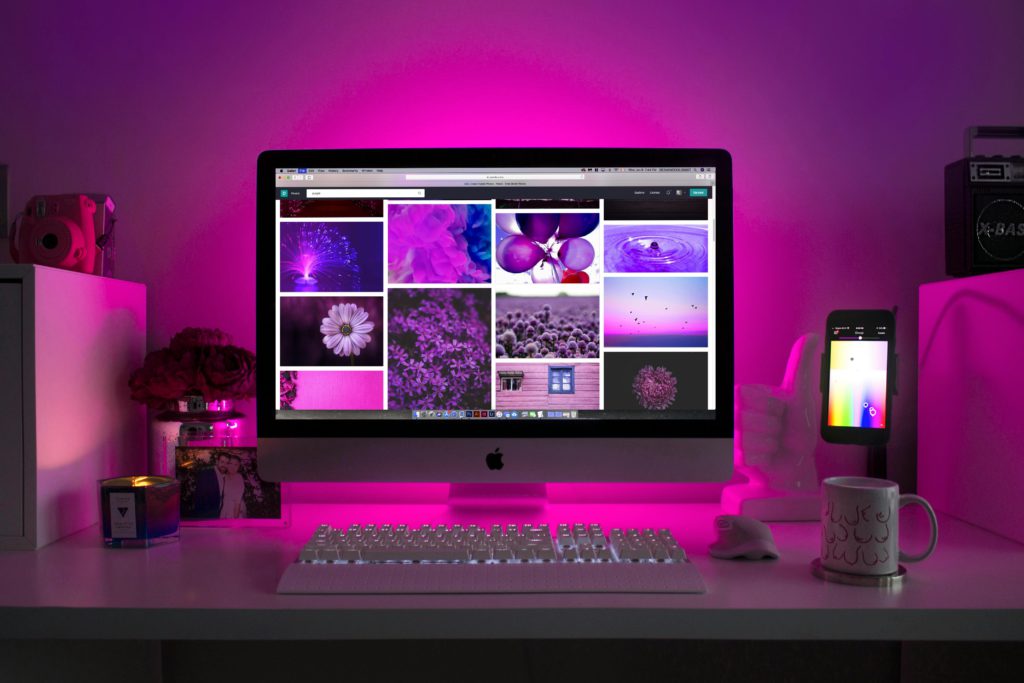Colour profiles are something all content creators and brands should understand. Certain ones are best for certain image types.

Colour profiles are essential when working with images, videos, or print projects because they define how colours are displayed or printed. Using the right colour profile ensures that your work looks great, whether it’s on a screen or a physical page. Let’s break down the most common colour profiles—RGB, CMYK, and others—and explain when to use them.
1. RGB: red, green, blue
What it is: RGB is the colour profile used for digital screens like monitors, TVs, and smartphones. It mixes red, green, and blue light to create a wide range of colours.
How it works: Colours are created by varying the intensity of each light. For example:
- Full intensity of all three (255, 255, 255) = White
- No light (0, 0, 0) = Black
- Only red and green (255, 255, 0) = Yellow
When to use it:
- Designing for websites, apps, or social media.
- Editing photos or videos for online use.
2. CMYK: cyan, magenta, yellow, black
What it is: CMYK is used for printing. It mixes four ink colours—cyan, magenta, yellow, and black—to create a full range of colours on paper.
How it works: Instead of adding light like RGB, CMYK subtracts light reflected from paper. For example:
- Combining cyan and yellow makes green.
- Adding black ink darkens the colours.
When to use it:
- Creating business cards, flyers, or posters for printing.
- Working on packaging or magazines.
3. LAB: lightness, A (green to red), B (blue to yellow)
What it is: LAB is a colour model used in advanced photo editing and colour correction. It’s based on human vision and covers all colours visible to the human eye, even beyond what RGB or CMYK can display.
How it works:
- L = Lightness (how bright or dark a colour is).
- A = Position between green and red.
- B = Position between blue and yellow.
When to use it: Professional photo editing where precise colour correction is needed.
4. HEX: hexadecimal colours
What it is: HEX is a code used to represent colours in web design. It’s a shorthand for RGB values but written in hexadecimal (base 16) format.
How it works: A HEX colour code like #FF5733 represents:
- FF = Full red
- 57 = Medium green
- 33 = Low blue
When to use it: Coding or designing for websites and apps.
5. HSL/HSB: hue, saturation, lightness/brightness
What it is: HSL and HSB are ways to describe colours based on their tone, intensity, and brightness. They’re often used in design tools for adjusting colours easily.
How it works:
- Hue: The type of colour (e.g., red, blue).
- Saturation: How vivid or dull the colour is.
- Lightness/brightness: How light or dark the colour is.
When to use it: Fine-tuning colours in graphic design or photo editing.
Why using the right colour profile matters
Using the wrong colour profile can lead to unexpected results:
- RGB on print: Colours may look dull or inaccurate because printers use CMYK.
- CMYK for digital: You might lose vibrancy since CMYK can’t show as many bright colours as RGB.
Tips for choosing the right profile:
- Screens: Use RGB or HEX.
- Printing: Use CMYK.
- Precision: Use LAB or HSL/HSB.
How to switch colour profiles
Most design and editing tools let you change colour profiles:
- Adobe Photoshop: Go to Edit > Convert to Profile.
- Canva: It defaults to RGB but offers options for print projects.
- Your printer: Check settings to ensure it’s using CMYK for accurate results.
Understanding colour profiles helps you choose the right one for your project. RGB is best for digital screens, CMYK is key for printing, and LAB or HSL is great for advanced editing. By using the right profile, your work will always look its best, whether it’s on a monitor or in someone’s hands.



